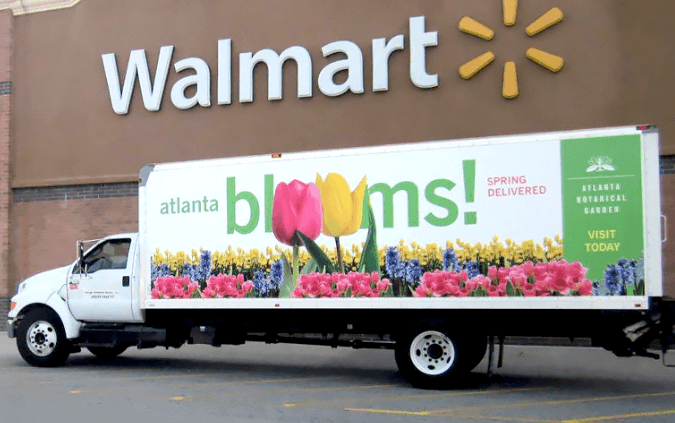
Out-of-home (OOH) is one of the oldest mediums of advertising, yet it remains extremely effective for its low cost and adaptability. Transit ads and truck-side ads are both forms of OOH but they offer different advantages and disadvantages. While transit advertising is predominantly seen by passengers, truck-side ads reach a wide range of people on the move, but may have poor visibility during bad weather. Want to find out which medium is better for you and your brand on the road? Look no further, as this article will compare the unique features of transit versus truck-side advertising.
Transit Advertising
There are different types of transit ads – varying from bus advertising to subway advertising. Let’s take a look at bus transit ads for an example. There are three main types of bus advertising. The first is King and Queen signs, which can be found on the exterior sides of transit vehicles and are the largest signs. The second are tail signs, which can be found on the back of the bus. The third type is interior cards which can only be seen by the passengers inside the bus. The price of bus ads depends on the timing, duration, and market. On average, bus exterior ads range from $2500 to $6500 for larger ads according to a four-week period. Interior ads can range from $20 to $125 for a four-week period. Similarly, subways and trains have exterior and interior ads as well as large displays at stations. Static subway ads can average around $3000, with a minimum purchase of 30 subway advertisements. Along with buses and subways, transit ads can also be found on trains and streetcars in many cities.
Pros
Transit advertising cannot be ignored or skipped like an online or television ad. All commuters, who may come from various different walks of life and different interests, will be exposed to these advertisements. Often on transit, there are long wait times from one destination to another, allowing ample time for an on-looker to see and understand an ad. On average, the cards displayed inside a bus reach passengers who spend an average of 30 to 40 minutes on the bus. Commuters also travel on fixed routes at scheduled times, which means they will be able to see your ad many, many times. This creates a permanent impact of your message and brand in their mind.
Cons
Although transit advertising can provide exposure to a large audience, this audience comes from a similar background with certain characteristics that may not fit the target market as a whole. Transit advertising also can have creative limitations, as there is limited space on buses and trains and these signs are generally smaller. Lastly, many transit ads face oversaturation – displaying the same ad for a very long period of time can lead your audience to ignore the advertisement.
Truck-side Advertisements
Truck-side ads utilize the otherwise blank sides of trucks to create mobile billboards. They are typically two or three sided and placed on trucks already on the road for transporting goods. Many of these mobile billboards are also equipped with LED lighting to help with visibility during the night or early morning. It costs around $3000 to $5000 to design and produce a truck-side ad, along with an additional $3000 a month to rent space. For truck-drivers and companies, fleets can earn around $300 to $500 a month per truck by turning their truck into a mobile billboard.
Pros
Truck-side ads are one of the most cost-effective forms of advertising. Reaching 1,000 people only costs 65 cents, whereas advertising with another medium, such as a magazine, costs $9.14 to reach 1,000 potential customers. Truck-side ads also require very little maintenance, as one vinyl wrap can last around 5 years – making this medium a one-time purchase. Truck-side ads also offer a high reach, being able to travel through different routes and targeting different types of people. This is where these ads offer more flexibility than transit ads. For example, currently not many commuters are using transit due to the global pandemic. Thus, transit ads are not being seen but truck-side ads are still on the roads and still visible to consumers. These bold displays are large and can bring any brand’s message to life. Having more space to advertise also allows for more creative and attention-grabbing ads.
Cons
Although truck-side remains a very strong form of advertising, it does have some of its own drawbacks. Firstly, truck-side ads offer poor visibility on dark and stormy days – making it difficult to capture the attention of on-lookers. Also, when trucks are parked outside, they run the risk of being vandalized and require additional time and money to erase. Lastly, mobile billboards work well with businesses who have already established a brand. Existing customers will be able to connect with an image or simple message. But new customers may only receive limited information about the brand from a truck-side ad, unable to connect and follow through with the message.
The Final Verdict. Transit or Truck-side?
This is a very difficult question. The short answer is – it depends. It depends on many factors, such as your target audience, your marketing budget, your location, and much more. Both mediums offer excellent advantages to help elevate any marketing campaign and can certainly help your brand reach greater success.


